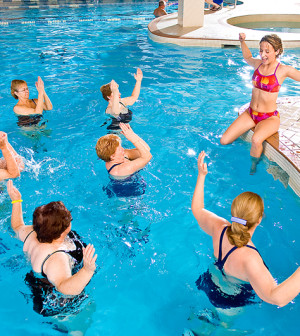- Double Mastectomy May Offer No Survival Benefit to Women With Breast Cancer
- Toxic Lead Found in Cinnamon Product, FDA Says
- Certain Abbott Blood Sugar Monitors May Give Incorrect Readings
- Athletes Can Expect High Ozone, Pollen Counts for Paris Olympics
- Fake Oxycontin Pills Widespread and Potentially Deadly: Report
- Shingles Vaccine Could Lower Dementia Risk
- Your Odds for Accidental Gun Death Rise Greatly in Certain States
- Kids From Poorer Families Less Likely to Survive Cancer
- Tough Workouts Won’t Trigger Cardiac Arrest in Folks With Long QT Syndrome
- At-Home Colon Cancer Test Can Save Lives
Back-to-School Tips May Help Ease Sensory Overload in Kids


FRIDAY, Aug. 30Transitioning from summer to a new school year is hard for any kid, but it is particularly difficult for children who have trouble processing new sensations, according to an expert on what is known as “sensory processing disorder.”
Sensory processing disorder is a neurological problem that affects behavior and learning. For kids with this disorder, too much sensory overload or the wrong kind of stimulation can lead to problems with attention, coordination and impulsiveness as the child tries to either increase or decrease the sensations they are experiencing.
Varleisha Gibbs, an assistant professor of occupational therapy at University of the Sciences in Philadelphia, explained that the transition back to school disrupts the daily routines that these children have established during the summer. She noted, however, planning ahead can help ease the stress of this transition.
“Students with sensory processing disorders typically struggle with adapting to change,” Gibbs said in a university news release. “A new school year brings an abundance of changes, including new teachers and classmates, schedules and routines, classrooms and settings, as well as new demands and expectations in the classroom.”
To ease the transition to a new school year for children with sensory processing disorders, Gibbs recommended that children, teachers and parents or caregivers take the following steps:
- Plan a visit. Before the first day of class, arrange a visit to the school to familiarize the child with the school setting and the teacher. If possible, take photos of the surroundings to help the child acclimate to the environment ahead of time.
- Be proactive. Reach out to the school early to inform administrators about the child’s therapy schedule. A child’s private occupational therapy sessions should be coordinated with any therapy offered at school so they do not overlap.
- Pack a sensory kit. Certain fidget devices may help keep children calm and focused during a stressful transition time. These objects include stress balls, seat cushions, gum and music with headphones. Teachers can also provide a variety of seating options in the classrooms, including beanbag chairs and therapy balls.
- Be open. Because not all children with sensory processing disorders are placed in special education, communicating a child’s needs to teachers and school administrators can help ensure they are able to benefit from their calming strategies. For example, these children may need to chew gum in class or listen to headphones between classes.
- Shop early. Purchase backpacks and school clothes well in advance so children can try them on and identify any items that are bothersome or uncomfortable. Be sure to remove all tags, wash the clothes and find underwear that can alleviate any irritability from the fabric rubbing against the skin.
- Set an example. When parents are calm and collected, it’s easier for children to feel the same way about going back to school.
More information
The SPD Foundation has more about sensory processing disorder.
Source: HealthDay
Copyright © 2024 HealthDay. All rights reserved.










